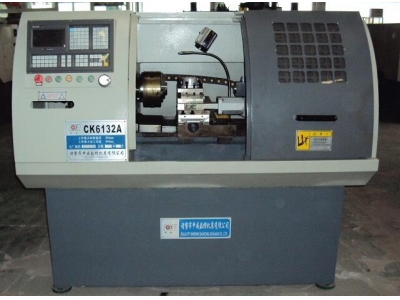一、電路維修實訓報告
電路維修實訓報告
引言
電路維修是電子技術領域中不可或缺的一部分。作為電子工程師,能夠熟練地進行電路維修是一項非常重要的技能。本報告旨在總結我在電路維修實訓中所學到的知識和經驗,并對實訓過程進行詳細分析。
實訓背景
電路維修實訓是我所在大學電子工程專業的一門必修課程。該課程旨在培養學生獨立分析和解決電路故障的能力,提升電子工程師的實踐能力和維修技術。
在本次實訓中,我接觸到了各種類型的電路故障,包括短路、開路、元件損壞等。通過實踐操作,我掌握了熟練的電路維修技巧和方法。
實訓過程
在實訓過程中,我首先了解了電路維修的基本原理和流程。對于一個故障電路,首先需要通過檢查和測量確定故障原因所在。在實驗室中,我們使用了各種測量儀器和工具,例如數字萬用表、示波器等,以幫助我們準確定位故障點。
在實訓中,我遇到了許多挑戰。有時候,故障點并不顯而易見,需要進行耐心和細致的分析。通過與同學們的合作和老師的指導,在經過多次實驗和調試后,我成功修復了很多電路故障。
此外,我還參與了一些小組項目,與同學合作進行了一些復雜電路的維修。通過合作,我們可以分享經驗和解決方案,提高工作效率,提供高質量的維修。
實訓收獲
通過電路維修實訓,我獲得了許多寶貴的經驗和技能。首先,我掌握了電路維修的基本原理和方法。我了解了常用的電路故障類型及其解決方案。
其次,我提升了分析和解決問題的能力。在實訓中,我需要仔細觀察和分析電路,尋找故障點,并決定合適的修復方案。通過實際操作,我加深了對電路維修過程的理解。
此外,實訓還培養了我的團隊合作精神和溝通能力。與同學合作進行小組項目時,我學會了與他人合作、有效地進行協調和交流。這些技能將在我未來的工作中起到重要的作用。
結論
電路維修實訓是我在大學期間重要的學習經歷之一。通過實踐操作,我不僅提升了電路維修技能,還培養了解決問題和團隊合作的能力。
在未來的工作中,我將利用所學到的知識和經驗,為電子工程領域的發展做出自己的貢獻。
Translation: htmlElectrical Circuit Repair Training Report
Introduction
Electrical circuit repair is an essential part of the field of electronics technology. As an electronic engineer, being proficient in circuit repair is an important skill. This report aims to summarize the knowledge and experience I gained during the electrical circuit repair training and provide a detailed analysis of the training process.
Training Background
The electrical circuit repair training is a compulsory course in the electronic engineering program at my university. This course aims to cultivate students' ability to independently analyze and solve circuit faults while enhancing practical skills and repair techniques of electronic engineers.
During this training, I encountered various types of circuit faults, including short circuits, open circuits, and component damages. Through practical exercises, I acquired proficient circuit repair skills and techniques.
Training Process
During the training process, I first understood the basic principles and procedures of circuit repair. For a faulty circuit, the first step is to identify the cause of the fault through inspection and measurement. In the laboratory, we utilized various measurement instruments and tools such as digital multimeters and oscilloscopes to help us pinpoint the faulty points accurately.
Throughout the training, I faced many challenges. Sometimes, the faulty points were not immediately apparent, requiring patient and meticulous analysis. Through cooperation with classmates and guidance from the instructor, I managed to repair numerous circuit faults after multiple experiments and debugging attempts.
In addition, I also participated in some group projects, collaborating with classmates to repair complex circuits. Through cooperation, we shared experiences and solutions, improving work efficiency and delivering high-quality repairs.
Training Achievements
Through the electrical circuit repair training, I gained valuable experiences and skills. Firstly, I mastered the fundamental principles and methods of circuit repair, understanding common types of circuit faults and their corresponding solutions.
Secondly, my ability to analyze and solve problems improved. During the training, I had to carefully observe and analyze circuits, identify faulty points, and determine suitable repair approaches. Through hands-on practice, I deepened my comprehension of the circuit repair process.
Furthermore, the training also fostered my teamwork and communication skills. When working on group projects with classmates, I learned to collaborate effectively, coordinate tasks, and communicate efficiently. These skills will play a crucial role in my future work.
Conclusion
The electrical circuit repair training has been one of the significant learning experiences during my university years. Through practical exercises, I not only improved my circuit repair skills but also developed problem-solving and teamwork abilities.
In my future work, I will utilize the knowledge and experience gained to contribute to the development of the field of electronic engineering.
二、直播實訓報告?
通過直播的實際訓練,大家在感受到直播非常不容易的過程當中提升了自己的能力,從而自己在以后直播的過程當中有了基本的素質和道德,在面對粉絲的時候有了自己想說的內容,同時在實際訓練當中自己表現出了一種善于學習的氛圍,這也是我們每個人應該努力的方向。
三、實訓報告評語?
學生在實習期間是務實和勤奮的。具有創造性和建設性的獨立思考;具有開拓創新精神,能更快地接受新事物,拓寬知識面,并在會計領域不斷探索。希望能夠更好的學習和工作,更加注意安全和健康。
這個學生工作積極,熱情,學習認真,尊敬師長,技術理論水平和操作技能近年來有了很大提高,希望今后繼續努力成為國家有用人才。
四、數控機床實訓總結?
一般機械制造及其自動化,機械電子工程,模具設計及制造以及數控加工技術專業都會開設數控機床相關的課程如數控編程,機床原理,編程,以及普車數控機床的實訓
五、海報實訓報告評語
海報實訓報告寫得非常的不錯,非常的詳細語言,非常的通順心得體會,非常的深刻
六、實訓報告的原理
要抓住重點。可以從理論和實踐兩個方面考慮。這部分要寫明依據何種原理。定律算法。或操作方法進行實驗。
詳細理論計算過程. 實訓環境和器材實訓用的軟硬件環境。
實驗步驟只寫主要操作步驟。不要照抄實習指導。要簡明扼要。還應該畫出實驗流程圖。再配以相應的文字說明。這樣既可以節省許多文字說明。實訓報告又能使實驗報告簡明扼要。清楚明白。實驗結果實驗現象的描述。實驗數據的處理等。
原始資料應附在本次實驗主要操作者的實驗報告上。
七、實訓報告怎么開?
實訓報告具體的撰寫要求如下:
一、概述
概述部分簡要介紹實訓內容、實訓崗位、實訓任務的完 成情況等內容。
二、主體
主體部分主要是介紹實訓過程做了些什么事、實訓的體會,包括個人完成的主要工作和取得的成績,思想和業務上的收獲和體會等情況。主體部分是學生實訓成果的展示和表述,是整個實訓過程的再現,本部分占實訓報告的大部分篇幅,要求內容客觀,思路清晰,合乎邏輯,要盡量讓事實和數據說話。用文字不容易說明的或說起來比較繁瑣的,可用圖表來表述。
三、總結
總結是實訓過程的總體結論和建議,撰寫總結時應明確 精煉、完整準確、措辭嚴密,主要回答“收獲了什么”“存 在哪些不足”“今后將要怎么做”等。它是實訓成果的歸納 和總結
四、致謝
致謝是對實訓指導教師及相關人員的一種感謝。
八、實訓,報告怎么寫?
實訓報告總結范文
總之,這次實訓為我提供了與眾不同的學習方法和學習體會,從書本中面對現實,為我將來走上社會打下了扎實的基礎。從實踐操作中,我總結出一些屬于自己的實踐經驗,社會是不會要一個一無是處的人的。現在我能做的就是吸取知識,提高自身的綜合素質,提高自己的表達能力、寫作能力和合作能力,自己有了能力,到時候才會是“車到山前必有路”。我相信在不久的未來,會有屬于我自己的一片天空!
九、實訓報告怎么寫?
實訓報告中的實踐內容通俗指的是文章的正文1、實訓內容和過程:實訓內容和過程作為實訓報告的重點,完整記錄實訓進行時的程序和步驟,寫明實訓經歷的內容和過程。
2、實訓體會和收獲:實訓體會和收獲作為實訓報告的重點,寫明是否完成實訓任務書的要求,是否解決實訓前的疑惑;寫明實訓的真實體會和收獲;寫明對實訓的意見和建議。
十、基礎會計實訓報告?
下面是一個可能的報告思路:
1. 實訓目的:介紹進行基礎會計實訓的目的和意義,包括加強對會計基礎知識的理解和掌握,以及提高實際操作能力等方面。
2. 實訓內容:介紹進行的基礎會計實訓內容,涉及到的知識點、實際操作和應用場景等。
3. 實訓過程:詳細介紹實訓的過程和方式,包括實驗室教學和模擬實踐等。
4. 實訓結果及分析:對實訓的結果進行分析,評估實訓效果,比較自己進行實訓前后的變化。
5. 認識與收獲:總結自己在實訓過程中的認識和收獲,包括對基礎會計知識的深刻理解、對實際操作技能的提高、實踐能力的增強等等方面。
6. 不足和改進措施:分析自己在實踐中存在的不足,提出具體可行的改進措施,使自己在今后的實踐中更加成功。
7. 結論:總結基礎會計實訓的意義和目的,強調在今后的學習、實踐和工作中對所學知識進行不斷的鞏固和運用。
需要注意的是,這只是一個可能的思路,實際的報告內容和形式還需要按照具體的實訓項目和學校要求進行調整。


 發布于
2024-04-29
發布于
2024-04-29